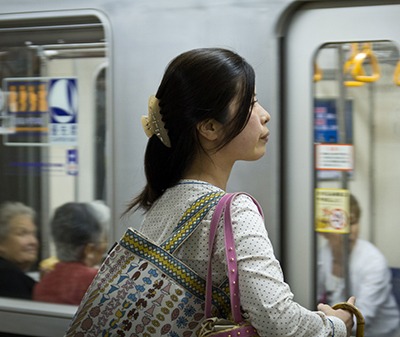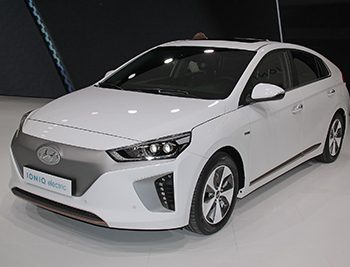Public transportation is the circulatory system of a healthy city. It moves people, connects neighborhoods, and reduces car dependency. Yet in car-centric societies, public transit is treated like that cousin no one talks about—underfunded, misunderstood, and unfairly blamed for things beyond its control.
Public transportation is a critical tool in the fight against climate change. According to the American Public Transportation Association (APTA), public transit reduces greenhouse gas emissions by 37 million metric tons annually in the U.S. alone. That’s like taking 8 million cars off the road. Buses, trains, and trams are far more energy-efficient than private vehicles, especially when powered by clean energy. In Oslo, Norway, the city’s goal is for all public transport to be fossil-free by 2028.
Public transportation also reduces air pollutants linked to respiratory diseases, heart conditions, and even cognitive decline. A 2019 study published in The Lancet found that reducing urban air pollution could prevent thousands of premature deaths annually. Fewer cars mean cleaner air, quieter streets, and cities designed for people, not parking lots.
Economically, public transit is a catalyst for growth. The APTA reports that every $1 invested in public transportation generates $5 in economic returns. Transit systems create jobs, boost local businesses, and increase property values near well-connected hubs. Cities with robust transit networks, like Tokyo, Paris, and New York, thrive because people can move efficiently, accessing jobs, services, and opportunities without the financial burden of car ownership.
Cars are expensive. The average annual cost of owning a car in the U.S. exceeds $10,000 when you factor in gas, insurance, maintenance, and depreciation. For low-income households, transportation costs can consume over 20% of their income, creating barriers to employment, education, and healthcare.
Public transportation is an equalizer. It provides mobility for those who can’t afford cars, can’t drive due to age or disability, or simply prefer not to. A society that relies solely on private vehicles excludes the very people who need mobility the most. In contrast, cities with accessible transit systems—think Helsinki, Zurich, or Seoul—offer freedom and autonomy to everyone, regardless of income or ability.
Yet despite its benefits, public transportation in many places is underfunded, inefficient, and stigmatized. In car-dominated cultures like the U.S., public transit is often viewed as a last resort, something you use if you’re too poor to drive. This perception is not only inaccurate but also a self-fulfilling prophecy: when transit is neglected, it becomes unreliable, reinforcing the idea that it’s inferior to private cars.
This isn’t the case everywhere. In Japan, public transport is a point of national pride. The Shinkansen (bullet train) is fast, a marvel of engineering, punctual, and cleaner than most people’s living rooms. In the Netherlands, cycling is seamlessly integrated with public transit, creating a multimodal system that prioritizes efficiency and sustainability. In Bogotá, Colombia, the TransMilenio bus rapid transit (BRT) system has revolutionized urban mobility, offering affordable, high-capacity transit in a city once crippled by traffic congestion.
Cities that invest in public transit reap the rewards. Those that don’t end up with clogged highways, polluted air, and residents spending hours of their lives in soul-sucking commutes. The U.S., for example, spends disproportionately on highways compared to transit, perpetuating car dependency and urban sprawl. Meanwhile, cities like Copenhagen invest in transit-oriented development, designing urban spaces where people live, work, and play within walking distance of reliable public transport.
Cities designed around people, not cars, are healthier, safer, and more enjoyable. Less traffic means less noise, fewer accidents, and more space for parks, bike lanes, and public spaces.
Commuting is also about mental health. According to a 2014 study, individuals with lengthy commutes tend to report lower life satisfaction and experience poorer overall health. In contrast, transit commuters who can relax, read, or nap experience less stress.
Technology offers new opportunities. Real-time tracking apps, contactless payment systems, and data-driven route optimization improve convenience and efficiency. However, tech isn’t a substitute for investment in infrastructure and service quality. The fanciest app won’t help if the bus never arrives.
Free transit is possible. Tallinn, Estonia, and Dunkirk, France, offer free public transportation, reducing car use, improving air quality, and increasing ridership. In Kansas City, Missouri, the first major U.S. city to adopt fare-free transit, officials report increased mobility for low-income residents and cost savings on fare collection infrastructure. Free transit is a statement that mobility is a public good, not a commodity. Just as we don’t charge for sidewalks or public parks, why should basic transportation be a pay-to-play system? Free transit reduces barriers, simplifies operations, and affirms the principle that everyone deserves the freedom to move.
Equity must be central to transit planning. Too often, improvements focus on affluent neighborhoods while marginalized communities face unreliable service. Transit justice movements, like Los Angeles’ Bus Riders Union, highlight how transportation policies can perpetuate racial and economic inequalities. An equitable transit system ensures that everyone—regardless of zip code—has access to affordable, efficient mobility.
Public transit done right offers freedom from both from congestion and the tyranny of car dependency.
Therefore, under Folklaw:
Public transportation shall be prioritized through robust investment in infrastructure, service expansion, and sustainable technologies. Transit systems will be accessible, affordable, and equitable, with fare-free options where feasible. Funding will support electrification, renewable energy integration, and maintenance of existing networks.
Urban planning will prioritize transit-oriented development, reducing reliance on private vehicles. Policies will ensure equitable service distribution, addressing the needs of marginalized communities.
Public engagement will guide transit decisions, fostering community ownership and accountability. International best practices will inform transit design, with continuous innovation to promote efficient and inclusive mobility.






Discussions
There are no discussions yet.